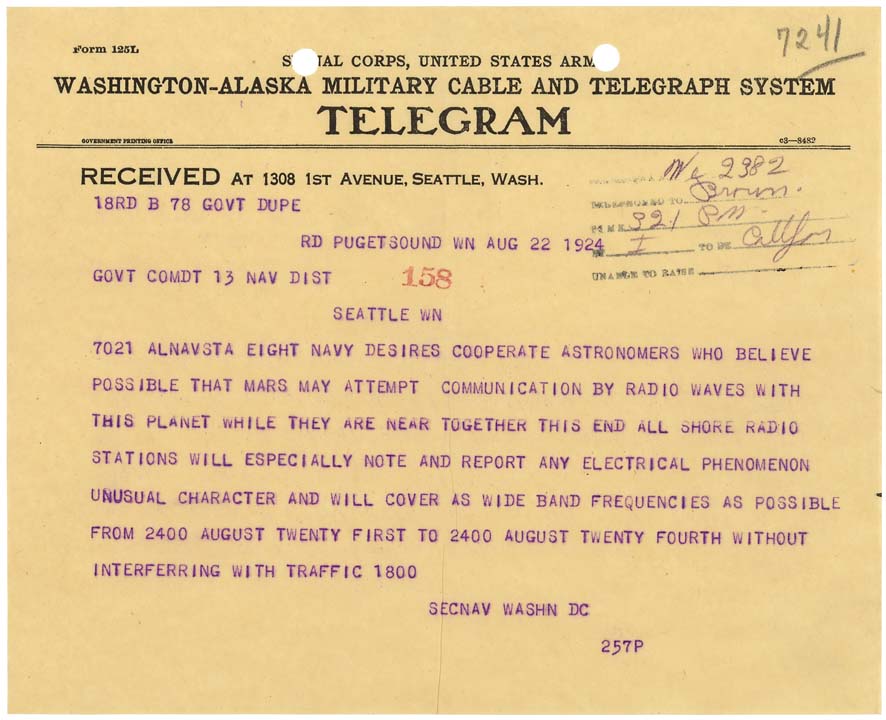Thanks to our orbits, Earth and Mars make relatively close passes every 26 months. Every now and then, there’s a really close approach. In 2003, for instance, we passed at a distance of 55.7 million kilometers (34.6 million miles), the closest the two planets have been to each other in 60,000 years.
In 1924, the two planets made an approach almost as close. During this time, astronomers and the US Government took advantage of the situation and attempted to look for life on Mars.
This wasn’t in the form of turning our visual telescopes towards the planet to get a better look, but a search for potential radio signals being broadcast by alien civilizations living on the Red Planet.
The idea may seem strange from a modern perspective. We know now, thanks to better telescopes, visiting space probes, analysis of Mars’s environment, and rovers we have sent to roam the planet, that the planet has no such civilizations. In the decades preceding the close approach, however, scientists weren’t all too clear.
For a time, astronomers suggested that there may be oceans on the planet. Then came the suggestion, bolstered by maps made by astronomer Giovanni Schiaparelli, that Mars had a series of canals running across the planet. In 1894, the public became excited by the idea too, after astronomer Percival Lowell suggested that Schiaparelli’s observations showed canals that had been made by an alien civilization.
Lowell ended up using a significant amount of his own money to take photographs of these “canals” in 1907, for him proving that the features were made by an alien species.
“After the melting of the south polar cap had got well under way, canals began to make their appearance about it,” Lowell said at the time, as reported by the New York Times.
“It is a direct sequitur from this that the planet is at present the abode of intelligent constructive life,” he added. “I may say in this connection that the theory of such life upon Mars was in no way an a priori hypothesis on my part, but deduced from the outcome of observation, and that my observations since have fully confirmed it. No other supposition is consonant with all the facts here.”
However, others were less convinced, and the photographs he took ended up contributing to the idea being discredited.
After this, most astronomers were convinced the canals were an optical illusion, which was confirmed in 1964 when NASA probe Mariner IV showed there were no such features on the planet. Nonetheless, there were still those who believed that life could be on the planet and that they could potentially communicate with it by radio.
Though the idea was not widespread, and evidence was beginning to point to the planet not being habitable, as the two planets came close to each other in 1924, humanity began its first real search for extraterrestrial radio signals.

A telegram sent to all Navy stations in the US.
Image credit: US National Archives
The US Government asked the public to keep radio silence during the first five minutes of every hour for “National Radio Silence day” as Mars and Earth made their close approach. During this time, astronomers kept an ear (and eyes) on the planet, while the US Government requested that all Navy outposts quieten their own radios to listen out for any potential communication from Martians.
It was optimistic, sure, and the result was predictable. No radio signals from Mars were picked up, as there was nobody there to send them. It now seems likely that analog radio signals would be an unlikely way for aliens to communicate, with other signals more likely. However, it was an interesting and exciting early attempt to find advanced alien species, attempts which have continued to the present day, and may one day find advanced alien life. That is, if they are out there to be found at all.


